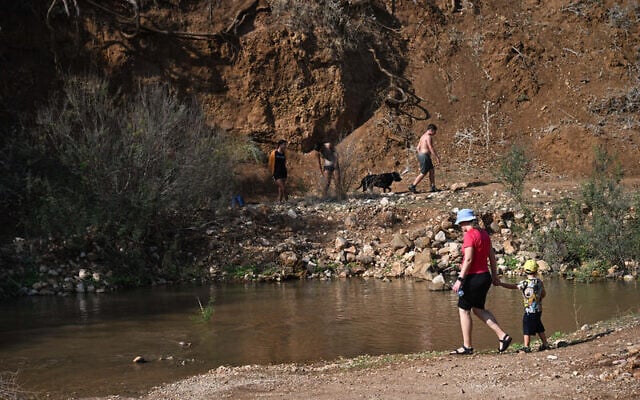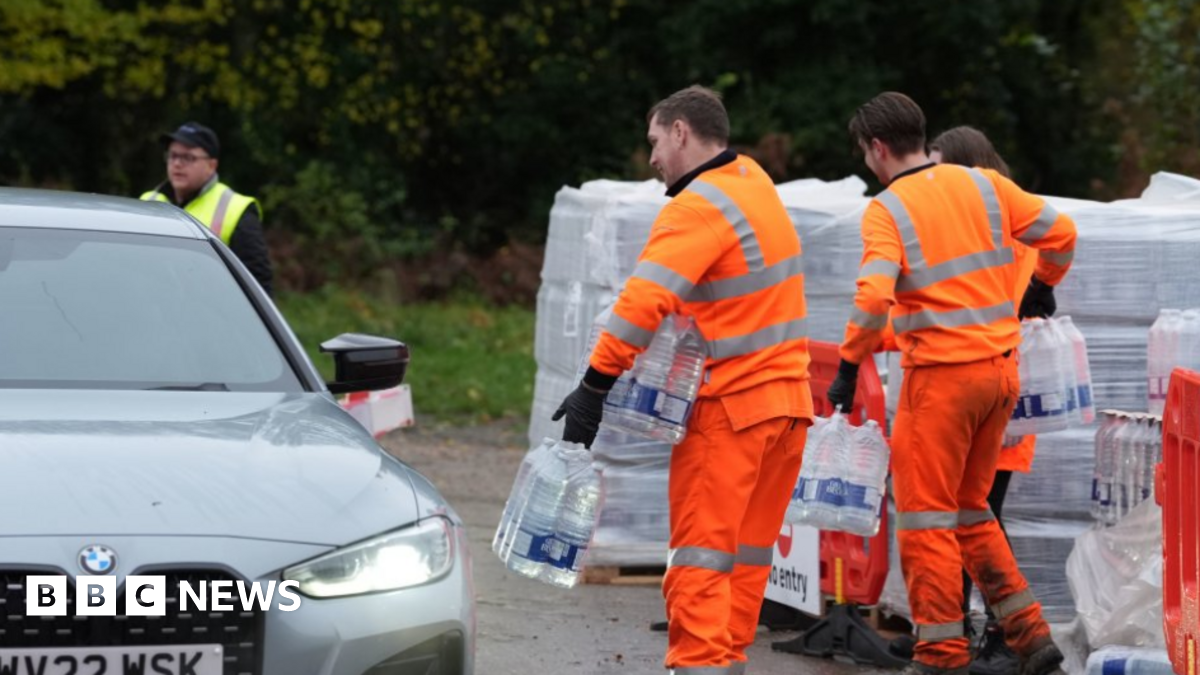New York secures over 1,200 acres to protect water quality in key regions, including WNY – WGRZ

Report on New York State Land Conservation Initiatives for Water Quality and Sustainable Development
Project Overview and Alignment with Sustainable Development Goals
The New York State Department of Environmental Conservation (DEC) has announced the permanent protection of over 1,200 acres of land across Westchester, the Finger Lakes, and Western New York. This initiative is strategically focused on safeguarding water quality through the conservation of critical ecosystems, including wetlands, forests, and shorelines. The project directly aligns with several United Nations Sustainable Development Goals (SDGs).
- SDG 6: Clean Water and Sanitation: The primary objective is to protect drinking water at its source by preserving natural landscapes that filter and secure clean water resources for communities.
- SDG 15: Life on Land: By conserving over 1,200 acres of forests and wetlands, the initiative works to protect, restore, and promote the sustainable use of terrestrial ecosystems and halt biodiversity loss.
- SDG 17: Partnerships for the Goals: The project exemplifies effective public-private partnerships, uniting state agencies with local land trusts to achieve shared conservation objectives.
Funding and Collaborative Framework
A total of $7.4 million in grants was awarded to five land trusts through the statewide Water Quality Improvement Project Program. This funding facilitates the acquisition and permanent protection of lands vital for water resource management. The collaboration between the DEC and organizations such as the Buffalo Niagara Waterkeeper and the Western New York Land Conservancy is a cornerstone of the program’s success, demonstrating a commitment to SDG 17 by leveraging multi-stakeholder partnerships for sustainable development.
Key Project Acquisitions and Environmental Impact
Specific land acquisitions in Western New York highlight the program’s targeted impact on local watersheds and communities.
-
Erie County Acquisition (Niagara River Watershed)
- Acreage: Over 44 acres across two properties (Kaiser and Paul).
- Partners: Buffalo Niagara Waterkeeper and the Western New York Land Conservancy.
- Environmental Features: The properties contain significant wetlands and forests, with Eighteen Mile Creek and a tributary flowing through them.
- SDG Contribution: This acquisition directly supports SDG 6 by preserving natural buffers that protect the Niagara River watershed and nearby drinking water supplies. It also advances SDG 15 by protecting critical headwater forest habitats.
-
Allegany County Acquisition (Genesee River Basin)
- Acreage: Over 200 acres (Birdsall property).
- Lead Organization: Western New York Land Conservancy.
- Environmental Features: The site includes over 500 feet of shoreline along Black Creek, as well as extensive wetlands and forests.
- SDG Contribution: This action safeguards drinking water for rural residents and downstream communities, including the village of Angelica, contributing to SDG 6. The preservation of the shoreline and forest ecosystems is a direct contribution to the targets of SDG 15.
1. Which SDGs are addressed or connected to the issues highlighted in the article?
-
SDG 6: Clean Water and Sanitation
This is the most prominent SDG in the article. The entire initiative described is focused on safeguarding water quality and protecting drinking water supplies.
- The article’s headline and opening sentence state that over 1,200 acres were protected to “safeguard water quality.”
- The DEC Commissioner is quoted saying, “Protecting drinking water at the source is one of DEC’s key priorities.”
- The acquired properties are intended to “help protect the Niagara River watershed and nearby drinking water supplies” and “safeguard drinking water for rural residents and downstream communities.”
-
SDG 15: Life on Land
The article details the protection of terrestrial and freshwater ecosystems as the primary method for achieving water quality goals. This directly aligns with the objectives of SDG 15.
- The protected areas include “wetlands, forests, and shorelines.”
- The article mentions the preservation of these areas as “natural buffers for drinking water,” highlighting the ecosystem services they provide.
- The goal is to protect “critical headwater forests and green space at their source,” which is a core component of conserving life on land.
-
SDG 17: Partnerships for the Goals
The project is a collaborative effort involving multiple stakeholders from government and civil society, which is the central theme of SDG 17.
- The New York State DEC, a government body, is partnering with “five land trusts,” which are civil society organizations.
- Specific partnerships are mentioned, such as the collaboration between the “Buffalo Niagara Waterkeeper” and the “WNY Land Conservancy.”
- The project is funded through a state program, demonstrating a financial partnership to achieve conservation goals.
2. What specific targets under those SDGs can be identified based on the article’s content?
-
SDG 6: Clean Water and Sanitation
- Target 6.6: “By 2020, protect and restore water-related ecosystems, including mountains, forests, wetlands, rivers, aquifers and lakes.” The article is a direct example of this target in action, describing the permanent protection of “wetlands, forests, and shorelines” along with creeks and river basins (Niagara River watershed, Genesee River Basin) to secure water resources.
- Target 6.b: “Support and strengthen the participation of local communities in improving water and sanitation management.” The project involves local organizations like the “Buffalo Niagara Waterkeeper” and the “WNY Land Conservancy,” which represent community and regional participation in managing and protecting local water sources.
-
SDG 15: Life on Land
- Target 15.1: “By 2020, ensure the conservation, restoration and sustainable use of terrestrial and inland freshwater ecosystems and their services, in particular forests, wetlands…” The article explicitly states that the project’s goal is to preserve “wetlands and forests” and protect inland waterways like “Eighteen Mile Creek” and “Black Creek.” The protection of over 1,200 acres is a direct contribution to this conservation target.
-
SDG 17: Partnerships for the Goals
- Target 17.17: “Encourage and promote effective public, public-private and civil society partnerships…” The entire initiative is built on a partnership between a public entity (New York State DEC) and civil society organizations (“five land trusts,” “Buffalo Niagara Waterkeeper,” “WNY Land Conservancy”). The article highlights this collaboration as essential to the project’s success.
3. Are there any indicators mentioned or implied in the article that can be used to measure progress towards the identified targets?
-
For SDG 6 & 15 Targets
- Indicator 6.6.1 / 15.1.2: (Change in the extent of water-related ecosystems / Proportion of important sites for terrestrial and freshwater biodiversity that are covered by protected areas). The article provides specific quantitative data that can be used for these indicators.
- A total of “more than 1,200 acres” have been permanently protected.
- Specific parcels are quantified: “more than 44 acres” for the Kaiser and Paul properties and “more than 200 acres” for the Birdsall property.
- The length of protected shoreline is also mentioned: “500 feet of shoreline along Black Creek.”
- Indicator 6.6.1 / 15.1.2: (Change in the extent of water-related ecosystems / Proportion of important sites for terrestrial and freshwater biodiversity that are covered by protected areas). The article provides specific quantitative data that can be used for these indicators.
-
For SDG 17 Targets
- Indicator 17.17.1: (Amount of United States dollars committed to public-private and civil society partnerships). The article explicitly states the financial commitment made to the partnership.
- The DEC awarded grants “totaling more than $7.4 million” to the land trusts. This is a direct monetary measure of the partnership’s resources.
- Indicator 17.17.1: (Amount of United States dollars committed to public-private and civil society partnerships). The article explicitly states the financial commitment made to the partnership.
4. Summary Table of SDGs, Targets, and Indicators
| SDGs | Targets | Indicators |
|---|---|---|
| SDG 6: Clean Water and Sanitation | Target 6.6: Protect and restore water-related ecosystems. | Indicator 6.6.1: The extent of protected water-related ecosystems, measured as “more than 1,200 acres” of protected wetlands, forests, and shorelines. |
| Target 6.b: Support and strengthen the participation of local communities in improving water management. | The involvement of local organizations like the “Buffalo Niagara Waterkeeper” and “WNY Land Conservancy” in land acquisition and protection efforts. | |
| SDG 15: Life on Land | Target 15.1: Ensure the conservation and sustainable use of terrestrial and inland freshwater ecosystems. | Indicator 15.1.2: The area of important terrestrial and freshwater sites protected, specifically “more than 44 acres” in Erie County and “more than 200 acres” in Allegany County. |
| SDG 17: Partnerships for the Goals | Target 17.17: Encourage and promote effective public, public-private and civil society partnerships. | Indicator 17.17.1: The amount of money committed to the partnership, stated as “grants, totaling more than $7.4 million.” |
Source: wgrz.com
What is Your Reaction?
 Like
0
Like
0
 Dislike
0
Dislike
0
 Love
0
Love
0
 Funny
0
Funny
0
 Angry
0
Angry
0
 Sad
0
Sad
0
 Wow
0
Wow
0



















































.jpg.webp?itok=0ZsAnae9#)

























